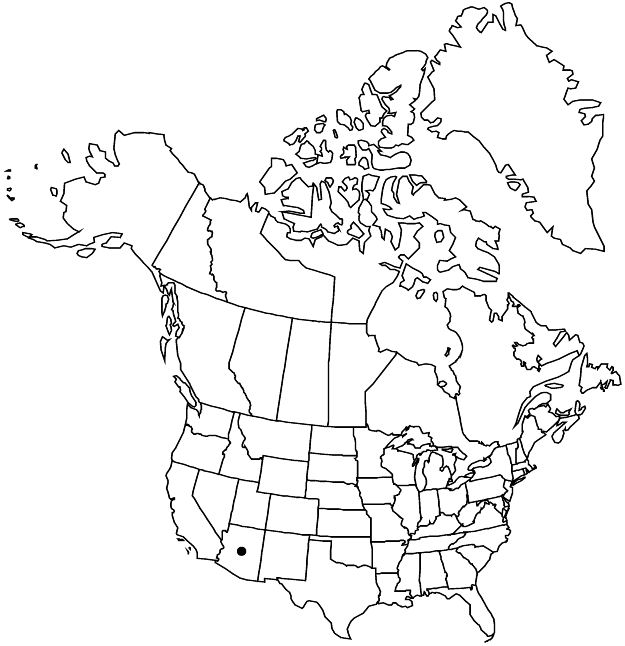Difference between revisions of "Euphorbia macropus"
in A. P. de Candolle and A. L. P. P. de Candolle, Prodr. 15(2): 52. 1862.
FNA>Volume Importer |
imported>Volume Importer |
||
| (5 intermediate revisions by 2 users not shown) | |||
| Line 1: | Line 1: | ||
{{Treatment/ID | {{Treatment/ID | ||
|accepted_name=Euphorbia macropus | |accepted_name=Euphorbia macropus | ||
| − | |accepted_authority=(Klotzsch & Garcke) Boissier | + | |accepted_authority=(Klotzsch & Garcke) Boissier |
|publications={{Treatment/Publication | |publications={{Treatment/Publication | ||
| − | |title=Prodr. | + | |title=in A. P. de Candolle and A. L. P. P. de Candolle, Prodr. |
|place=15(2): 52. 1862 | |place=15(2): 52. 1862 | ||
|year=1862 | |year=1862 | ||
}} | }} | ||
|common_names=Huachuca mountain spurge | |common_names=Huachuca mountain spurge | ||
| − | |basionyms={{Treatment/ID/ | + | |basionyms={{Treatment/ID/Basionym |
|name=Anisophyllum macropus | |name=Anisophyllum macropus | ||
|authority=Klotzsch & Garcke | |authority=Klotzsch & Garcke | ||
| + | |rank=species | ||
| + | |publication_title=Abh. Königl. Akad. Wiss. Berlin | ||
| + | |publication_place=1859: 33. 1860 | ||
}} | }} | ||
|synonyms={{Treatment/ID/Synonym | |synonyms={{Treatment/ID/Synonym | ||
|name=Euphorbia biformis | |name=Euphorbia biformis | ||
|authority=S. Watson | |authority=S. Watson | ||
| + | |rank=species | ||
}} {{Treatment/ID/Synonym | }} {{Treatment/ID/Synonym | ||
|name=E. plummerae | |name=E. plummerae | ||
|authority=S. Watson | |authority=S. Watson | ||
| + | |rank=species | ||
}} | }} | ||
|hierarchy=Euphorbiaceae;Euphorbia;Euphorbia sect. Alectoroctonum;Euphorbia macropus | |hierarchy=Euphorbiaceae;Euphorbia;Euphorbia sect. Alectoroctonum;Euphorbia macropus | ||
| Line 42: | Line 47: | ||
-->{{#Taxon: | -->{{#Taxon: | ||
name=Euphorbia macropus | name=Euphorbia macropus | ||
| − | + | |authority=(Klotzsch & Garcke) Boissier | |
| − | |authority=(Klotzsch & Garcke) Boissier | ||
|rank=species | |rank=species | ||
|parent rank=section | |parent rank=section | ||
| Line 54: | Line 58: | ||
|distribution=Ariz.;Mexico;Central America (Guatemala;Honduras). | |distribution=Ariz.;Mexico;Central America (Guatemala;Honduras). | ||
|reference=None | |reference=None | ||
| − | |publication title=Prodr. | + | |publication title=in A. P. de Candolle and A. L. P. P. de Candolle, Prodr. |
|publication year=1862 | |publication year=1862 | ||
|special status= | |special status= | ||
| − | |source xml=https:// | + | |source xml=https://bitbucket.org/aafc-mbb/fna-data-curation/src/2e0870ddd59836b60bcf96646a41e87ea5a5943a/coarse_grained_fna_xml/V12/V12_741.xml |
|genus=Euphorbia | |genus=Euphorbia | ||
|section=Euphorbia sect. Alectoroctonum | |section=Euphorbia sect. Alectoroctonum | ||
Latest revision as of 19:17, 5 November 2020
Herbs, perennial, with thick, globose to elongated tubers, 2–8 cm. Stems erect to ascending, branched, 10–45(–60) cm, glabrous, puberulent, or densely hirsute to setose, often with 2-layered indumentum of long hairs intermixed with short hairs. Leaves usually opposite, occasionally whorled distally, or rarely with 1–2 alternate leaves; stipules 0.1–0.2 mm; petiole 0–18 mm, hirsute, sericeous, or strigose; blade linear to ovate or almost orbiculate, 6–54 × 2–19 mm, base rounded to attenuate, margins entire, occasionally ciliate with stiff recurved hairs, apex acute to obtuse, surfaces usually hirsute, sericeous, or strigose, occasionally glabrous adaxially; venation conspicuous. Cyathia in weakly-defined terminal dichasia; peduncle 1.4–5.8 mm, glabrous. Involucre obconic to campanulate, 1.1–1.4 × 0.5–1.5 mm, glabrous or strigillose; glands 4–5, greenish, oblong, 0.2 × 0.4–0.5 mm; appendages usually yellowish or green, rarely dark purple, ovate, flabellate, semiorbiculate, or oblong, 0.3–0.9 × 0.4–1.1 mm, usually entire. Staminate flowers 10–15. Pistillate flowers: ovary glabrous, sericeous, or strigillose; styles 0.4–0.6 mm, 2-fid 1/2 length. Capsules oblate, 2.3–3 × 3.1–4.2 mm, glabrous, sericeous, or strigillose; columella 1.6–2.1 mm. Seeds black to light brown, broadly ovoid to subglobose, rounded in cross section, 1.5–2.3 × 1.4–1.8 mm, smooth or with low rounded tubercles; caruncle absent.
Phenology: Flowering and fruiting summer–fall.
Habitat: Stream banks and rocky slopes in pine-oak woodlands, sometimes with juniper, Douglas fir-pine forests.
Elevation: 1500–2200m.
Distribution

Ariz., Mexico, Central America (Guatemala, Honduras).
Discussion
Euphorbia macropus is a widespread and common Mexican species just barely entering the flora area in southeastern Arizona, where most of the collections are from the Huachuca Mountains.
Selected References
None.